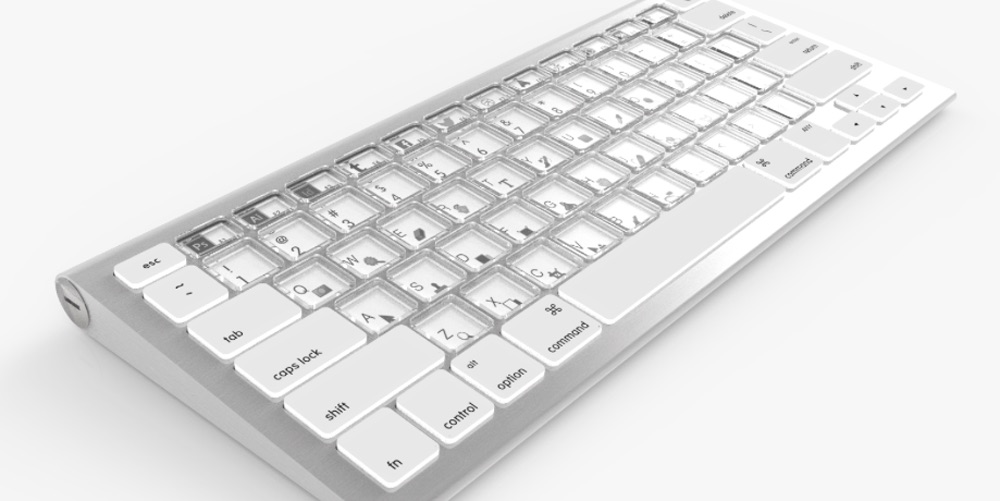
While the MacBook Pro‘s now-vintage Touch Bar may have been a misstep, it still seems likely that Apple’s long-term vision is to replace physical keyboards with touchscreen ones – and Carnegie Mellon University’s flat panel haptics could be a better bet than the approaches Apple has patented to date.
Apple’s first step in this lengthy journey was of course the iPhone, replacing the physical keyboards which were the norm on smartphones of the time with a screen-based virtual one …
That was followed by the iPad, which offered something close to a normal-sized keyboard in virtual form. But there are numerous Apple patents to suggest that the company doesn’t plan to stop there.
The problem with screen-based keyboards
Dynamic keyboards – where the function of keys can change contextually, depending on the app you are using and what you are doing at the time – are likely the next major development. They offer far greater flexibility than conventional keyboards, enabling them to be customized for anything from typing in another language to video editing.
One form of dynamic keyboard retains physical keys, but uses e-ink or OLED keycaps to allow the function of the keys to be changed on demand.

Another is to replace a physical keyboard with a screen-based one, as on the iPhone and iPad. The problem, of course, is that the lack of feel and movement makes a screen both awkward and uncomfortable to use for all but small volumes of text.
Apple’s work to solve these problems
The lack of movement is easily solved with haptics. Apple in particular has demonstrated just how convincing this feel can be: Its trackpads haven’t offered physical clicks for years, but you’d never guess that if you didn’t already know. The feeling is 100% convincing.
But feeling movement is only half the battle with keyboards: You can’t touch-type unless your fingers can feel the keys before you press them.
Apple has been working on this problem for many years, and a 2018 patent illustrates one potential solution – using an electrostatic charge to simulate the feeling of the edge of a key.
But Carnegie Mellon’s flat panel haptics seems better
But two researchers in the Future Interfaces Group (FIG) at Carnegie Mellon University have come up with what seems like a better approach, in the form of what they call flat panel haptics. Gizmodo explains.
Researchers from Carnegie Mellon University’s Future Interfaces Group (FIG) are taking another shot at solving these issues with a technology they’re calling Flat Panel Haptics, as detailed in a new paper […]
The FIG researchers have succeeded in creating embedded electroosmotic pumps (EEOPs)—capable of moving liquids by applying electrical fields instead of using moving parts—that measure just 1.5 millimeters thick.
They can be paired with an equally thin liquid reservoir beneath them, and a flexible surface structure on top, to almost instantaneously create pop-up buttons (the process takes about a second) measuring almost five millimeters in height with enough pressure and rigidity to make them feel solid when pressed.
Right now, the buttons would be a fixed format – meaning their function can change, but their size and shape cannot. However, the long-term goal is to implement this tech at a pixel level, so that keys can be any size and shape.
Of course, there will always be keyboard purists who insist on nothing less than full-travel mechanical keyboards, but Apple has already demonstrated that customers will adapt to the feel of a variety of keyboard mechanics (if they can be made reliable!), so it doesn’t seem too much of a stretch to imagine this tech not too far down the road.
What’s your view? Given the ability to adjust the keyboard to different apps, from video editing tools to foreign language keyboards, would adapting to a different keyboard feel be worthwhile? Please share your thoughts in the comments.
Add 9to5Mac to your Google News feed.
FTC: We use income earning auto affiliate links. More.





